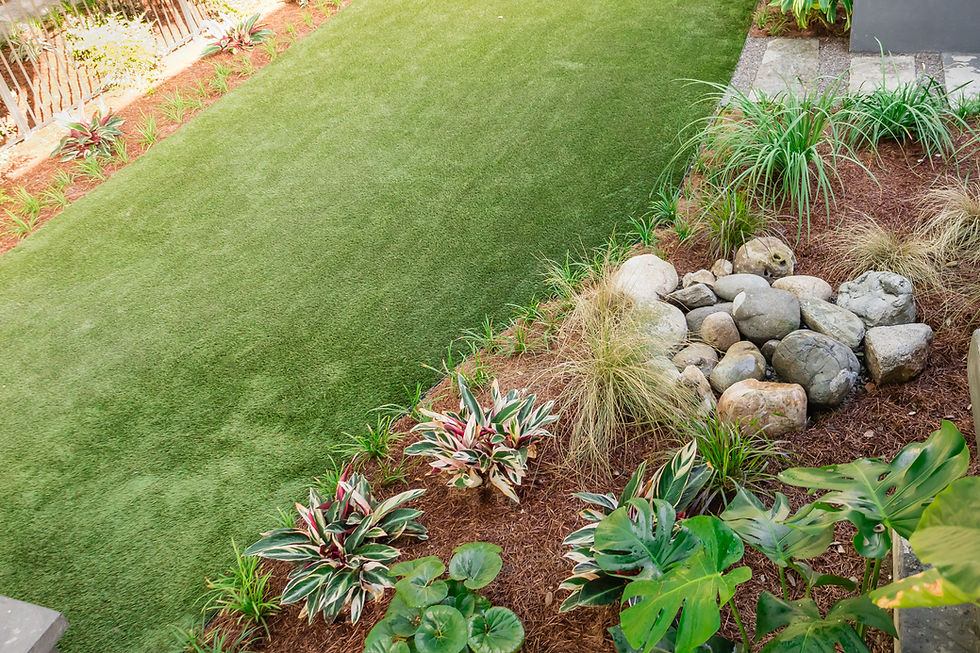The Art of Landscaping
- Jesse Edmondson
- Feb 19, 2020
- 3 min read
Updated: Nov 9, 2021
“The garden must first be prepared in the soul or else it will not flourish.” – English proverb
Whether your green thumb seeks a traditional New Orleans style courtyard garden or something that’s unique to you, a step-by-step plan should be your first priority. Careful planning is one of the most crucial stages of proper gardening. Here at The Garden Gates Landscape Company, we use the most sophisticated and cutting edge design techniques and technologies to help you visualize any landscape idea in a clear, easy-to-see printouts and graphics. This way, every nook and cranny in your outdoor setting will be covered and you can see what it will look like before it’s even started.

The term “landscaping” can be used to describe any activity that changes the visible, pre-existing features of the land. This includes, but is not limited to: living elements (gardening, flora, fauna), natural elements (landforms, terrain, bodies of water), human elements (buildings, fences, structures/objects made or installed by humans), and abstract elements (weather, lighting). All good landscaping combines science and art, observation and design, nature and construction. In order to be a good landscaper, you must understand the land. To understand, you must study and observe and process. Landscaping is different depending on the region in which you live and familiarity with your garden site is essential for success.
Natural features such as terrain, topography, soil quality, prevailing winds, frost line depth, and native flora and fauna will affect the creation and maintenance of your garden. If the land you wish to use for your dream garden plot is not ideal, you can reshape it in a process called “grading.” Most grading processes involve cutting (removing earth from land) and/or filling (adding earth to land), and the removal of excess waste, soil and rocks. It is very important to think about and tackle the grading that your plot might need before diving headfirst into planting.
LANDSCAPE DESIGN

“All gardens are a form of autobiography.” – Robert Dash
The ideal garden is a place where sights, smell, touch, and sound are synchronized in perfect harmony to create a picturesque wonder. The Garden Gates Landscape Company can bring the seed of your gardening ideas to full fruition with the help of our Landscape Architect. Whether it's a fragrant, vibrant spread of flowers complete with soothing wind chimes and Bistro furniture or a modern design with outdoor fireplaces and unique sculptures, we have what it takes to indulge your distinct tastes.
Landscape design is both a design and art tradition that combines nature, culture, and style. All the independent garden professions may cause confusion, but landscape design fills the gap between landscape architecture (urban planning, city parks, corporate landscape, etc) and garden design. Landscape design focuses on planning the landscape, designing the garden, and implementing both plan and design.

A landscape designer must consider many different factors when planning each landscape, including objective elements such as climate, microclimate, drainage systems, soil, topography, surrounding infrastructures, lighting, native plants and animals, and more. There are also subjective elements for the landscape designer to consider, such as the client’s wants and needs, desirable plants to retain or modify on site, artistic composition, spatial development, plant layout, and focal points.
There are, for the most part, two types of landscape design: formal (based on geometry) and informal (based on nature). Formal design uses geometric patterns, topiary frames, focal points, plant bordering and edging - all things that provide symmetry and unify the garden. Informal design rejects such techniques and strives for a more organic look. Informal gardens are low maintenance and focus on plants native to the region because they don’t struggle as much as non-native plants do with the bugs, fungus, soil pH, and weather in the region.
It is important to remember that the work is not done once the garden is designed and executed. A garden will need proper care and maintenance to thrive and survive, so make sure you speak with your landscape designer about how to keep your garden looking as good as the day it’s installed.







Comments